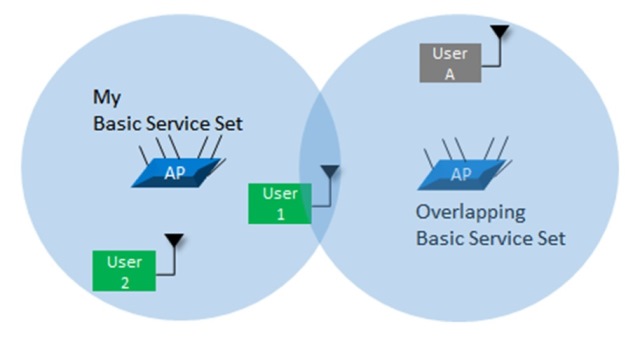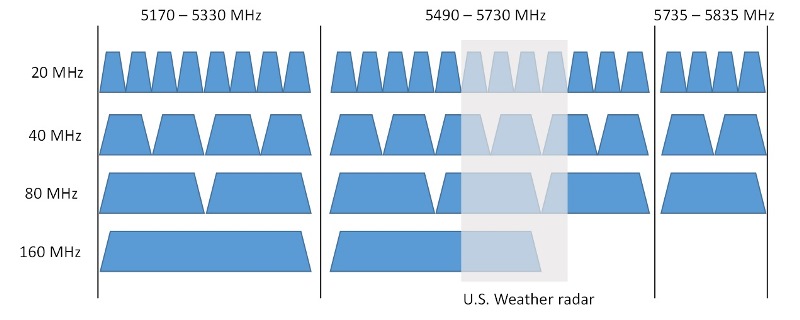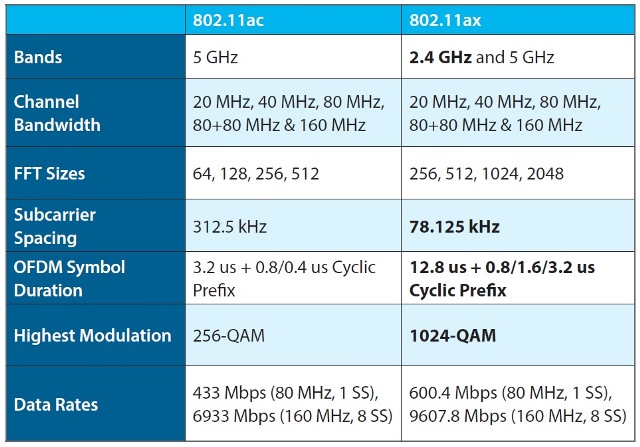BY ALEJANDRO BURITICA
Senior Product Marketing Manager – RF
National Instruments
www.ni.com
[Editor’s note: Understanding the fundamental differences between the established 802.11ac wireless communication standard and the new 802.11ax will be key for portable test equipment, not only in terms of testing links, but also in establishing links between test equipment and controlling hardware, such as smart devices. Here, we begin a two-part series on the new link, with Part 2 to follow next month.]
Imagine yourself at a busy airport terminal, waiting for your flight to start boarding, when suddenly the airline announces that the flight has been cancelled. You immediately use your mobile device to check for alternative options and try to reschedule. However, pretty much everyone else will proceed to do the same thing, and chances are that the airline’s webpage will take a long time to load.
Why? After all, this is an 802.11ac network. In theory, it boasts single-stream speeds greater than 400 Mbps for an 80-MHz channel.
Although 802.11ac certainly provides for very fast links, this performance normally occurs in environments with low user density, usually in the tens or below per Access Point. The actual data throughput that 802.11ac can provide degrades significantly in very dense user environments. That’s why new changes to the 802.11ax standard are being made in an effort to improve data throughput in crowded spaces.
Challenges to throughput in dense environments
The 802.11 protocol uses a carrier-sense multiple-access (CSMA) method in which the wireless stations (STA) first sense the channel and attempt to avoid collisions by transmitting only when they sense the channel to be idle — that is, when they don’t detect any 802.11 signals. When an STA detects another one, it waits for a random amount of time for that STA to stop transmitting before listening again for the channel to be free. When STAs are able to transmit, they transmit their whole packet data (Fig. 1 ).

Fig. 1: Clear Channel Assessment Protocol.
Wi-Fi STAs may use Request to Send/ Clear to Send (RTS/CTS) to mediate access to the shared medium. The Access Point (AP) only issues a CTS packet to one STA at a time, which, in turn, sends its entire frame to the AP. The STA then waits for an acknowledgement packet (ACK) from the AP indicating that it received the packet correctly. If the STA doesn’t get the ACK in time, it assumes the packet collided with some other transmission, moving the STA into a period of binary exponential backoff. It will try to access the medium and re-transmit its packet after the backoff counter expires.
Although this Clear Channel Assessment and Collision Avoidance protocol works well to share the channel fairly among all participants within the collision domain, its efficiency decreases when the number of participants grows very large. STAs have to wait longer time periods for their turn to get dedicated access to the channel to transmit or receive data.
Another factor that contributes to network inefficiency is having many APs with overlap- ping areas of service. Fig. 2 depicts a user (User 1) that belongs to the Basic Service Set (BSS, a set of wireless clients associated with an AP) on the left. User 1 would contend for access to the medium with other users in its own BSS and then exchange data with its AP. However, this user would still be able to hear traffic from the overlapping BSS on the right.

Fig. 2: Medium access inefficiency from overlapping BSS.
In this case, traffic from the Overlapping BSS (OBSS) would trigger User 1’s backoff procedure. This kind of situation results in users having to wait longer for their turn to transmit, effectively lowering their average data throughput.
A third factor to consider is the shared use of wider channels (Fig. 3 ). For example, for 802.11ac operation in North America, there is only one 160-MHz channel available, and in Europe, there are only two.

Fig. 3: Example 802.11ax channel allocation on the 5-GHz band.
Because of this, planning dense coverage with a reduced number of channels becomes very difficult. Without careful and deliberate power management, users will experience co-channel interference, which degrades performance and negates much of the expected gain from the wider channels.
This is especially true for the top data rates of MCS 8, 9, 10, and 11, which are much more susceptible to low signal-to-noise ratio. Also, a user transmitting on a 20-MHz channel overlapping an 80-MHz channel will basically render the 80-MHz channel useless. Implementing 802.11ac’s Channel Sharing in a high-density network compromises the gains of the 80-MHz channel for transmissions on a 20-MHz channel.
PHY mechanisms for high efficiency
The 802.11ax specification introduces significant changes to the physical layer of the standard. However, it maintains backward compatibility with 802.11a/b/g/n and /ac devices, so that an 802.11ax STA can send and receive data to legacy STAs. These legacy clients will also be able to demodulate and decode 802.11ax packet headers — though not whole 802.11ax packets — and backoff when an 802.11ax STA is transmitting. Table 1 highlights the most important changes to this revision of the standard, in contrast to the current 802.11ac implementation.
Table 1: Key PHY differences between 802.11ac and 802.11ax.

Notice that the 802.11ax standard will operate in both the 2.4-GHz and 5-GHz bands. The specification defines a four times larger FFT, multiplying the number of subcarriers. However, one critical change with 802.11ax is that the subcarrier spacing has been reduced to one-fourth of that of the previous 802.11 revision while preserving the existing channel bandwidths (Fig. 4 ).

Fig. 4: Narrower subcarrier spacing.
The OFDM symbol duration and cyclic prefix also increased by four times, keeping the raw link data rate the same as 802.11ac, but improving efficiency and robustness in indoor/outdoor and mixed environments. Nevertheless, the standard does specify 1024-QAM and smaller cyclic prefix ratios for indoor environments, which will increase the maximum data rate. ☐
Advertisement
Learn more about National Instruments





